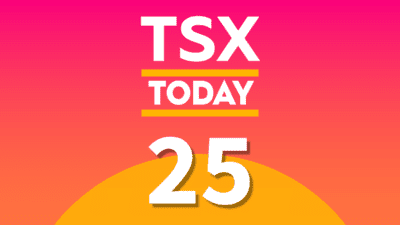There is now a plethora of investment products for Canadians to put to work across a wide range of sectors, geographies, factors, and themes. The number of products is growing by the day, and while most of them aren’t game changers, some cater to unique circumstances.
Take CIBC’s (TSX:CM)(NYSE:CM) new line of CDRs (Canadian Depository Receipts), which went live on the NEO Exchange recently. Now, you’re probably familiar with ADRs (American Depository Receipts). They’re U.S.-traded securities that allow investors to own a slice of a foreign business easily.
Chinese ADRs are wildly popular on U.S. exchanges, as they’re among the easiest ways (apart from China Equity ETFs) to gain exposure to the fast-growing Chinese market without having to venture onto the Hang Seng exchange. Such ADR products have been used for years and have found a spot in the portfolios of many big-league money managers. For those itching to gain exposure to China, Japan, or the U.K., Nasdaq-listed ADRs tend to be the way to go.
Amazon CDRs go live in Canada for the very first time
Just last month, CIBC launched Amazon.com CDRs for the first time on a Canadian exchange. The new offering was designed for Canadians who want to own shares of U.S. equities without having to put up with exchanging one’s Canadian dollars for greenbacks. Indeed, many Canadians are growing fed up with getting dinged by their banks when they make the currency swap. CDRs aims to solve the problem that has kept many Canadians from putting money to work south of the border.
CDRs have currency hedges built in, but are they really worth the hype? Or is it better to make the currency swap for actual shares on a U.S. exchange, since many Canadians can already actively trade securities listed on the NYSE and Nasdaq?
Personally, currency hedging doesn’t at all get me excited about CIBC’s line of CDRs. Why? I think that long-term Canadian investors should seek to have exposure to more than one currency. Should oil prices pullback once again (I think they will), the loonie could lose ground to the greenback, and it’s just nice to be able to play both sides of the coin (no pun intended) when it comes to FX moves.
Indeed, currency hedging is overrated. And in some cases, the costs of hedging are just not worthwhile. As the loonie loses ground to the U.S. dollar going into the post-pandemic environment, I’d argue that owning U.S. dollars while the loonie is still worth north of US$0.80 makes a lot of sense.
In any case, long-term investors shouldn’t make too much of currency movements and should instead focus their efforts on the non-Canadian company they’re thinking about investing in.
Here’s where CDRs really shine
Where CDRs really shine, I believe, is that it allows Canadian investors to gain exposure to a company like Amazon stock without having to pay up the steep price of admission. Today, Amazon stock goes for over US$3,350 per share! That’s over $4,200 Canadian to punch your ticket into the e-commerce behemoth!
For many small investors, putting up that amount for just one share is out of the question.
Indeed, Amazon stock needs a split to appease smaller retail investors. When it comes to certain big-league American companies, it doesn’t seem like we’ll be getting one, at least not anytime soon. That’s why fractional shares have been wildly popular among young investors who don’t have $4,200 to buy a single share.
With CIBC’s Amazon CDRs, the price of admission drops considerably to $21.11 per note. That’s far easier to digest for smaller investors seeking an easy way to get fractional shares!
Bottom line
CIBC’s CDRs aren’t for everyone. Many Canadians would rather own actual shares of a U.S. company and take the FX hit. For those who want a currency hedge and a lower price of admission to many high-priced U.S. stocks, CIBC’s CDRs are the best thing since sliced bread.
Soon, CDRs for other popular American stocks, like Alphabet, which goes for over US$2,700 per share, will be coming to the NEO exchange. And they’ll open up the door for many Canadian retail investors who can’t get in on the action because of a lack of splits!







